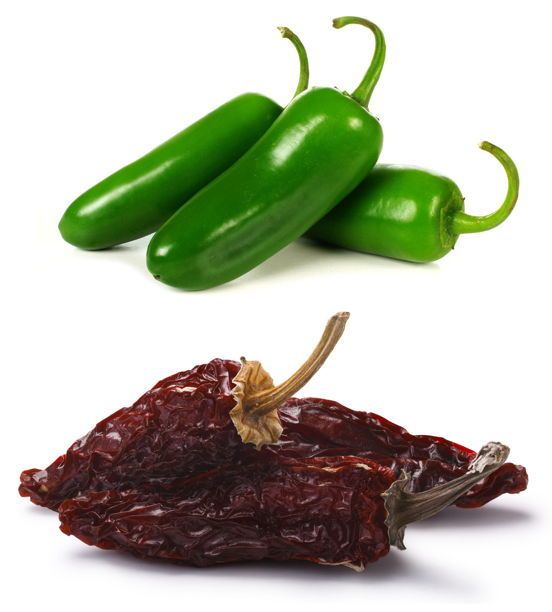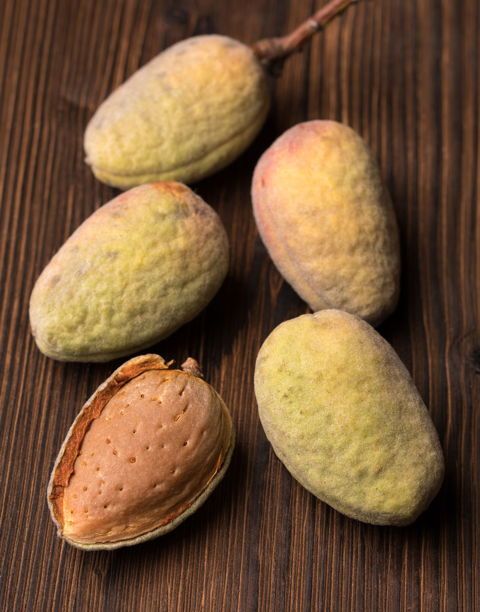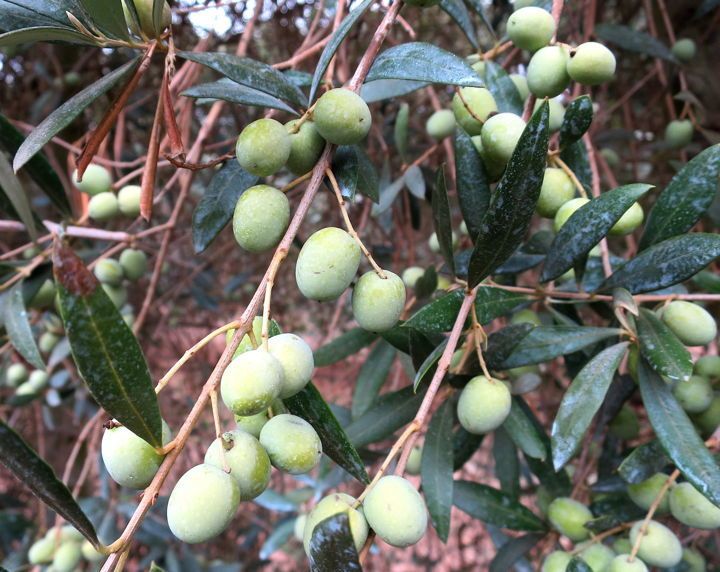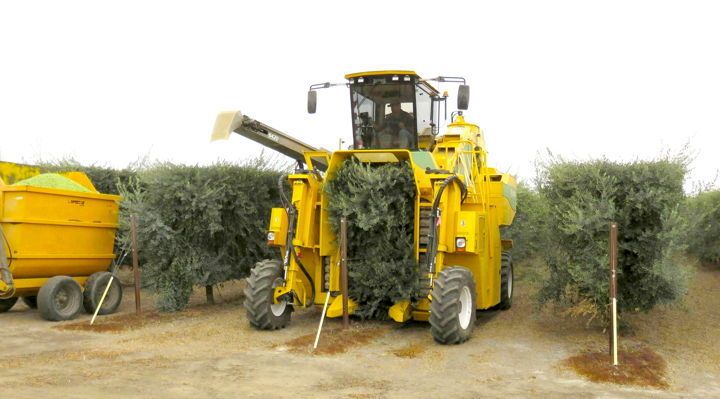During a recent tour of an olive grove, I began to question the very meaning of the the word "ripe." That day I learned, to my surprise, that when olives are harvested to make olive oil, it's best to pick them when they're still green, long before they turn purple. But aren't these green olives still unripe? I asked — only to be told that No, for this purpose, green IS ripe. Their flavor is perfect for making oil.
Despite my lifelong assumption that "ripeness" was a rigorously defined physical attribute, it dawned on me that "ripe" simply means "pleasing to humans."
A botanist might tell you that a fruit or vegetable is ripe at the moment when its maturation is complete and its flavor, sugar content and size have peaked. But when it comes to human preferences, it turns out that's not always true — so for us, "ripe" means something else.
The very concept of ripeness is a "cultural construct" — a term used in sociology for any quality assumed to be based on objective reality, but which is actually dependent upon a society's assumptions and preferences. Usually the term "cultural construct" is applied to human attributes such as or "bravery" or "honesty," which can mean quite different things in different cultures. But the term can also apply to anything subjective.
Jalapeños and Chipotles
The culturally constructed, variable nature of what counts as "ripe" can be easily seen with the fruit of the jalapeño pepper plant. A horticulturalist will insist that the fruit of the plant is "ripe" only once it has turned red and is still firm and moist. Yet, strangely, the fruit is almost never harvested at that stage. It is either picked much earlier when it is still green and immature, at which point it is called a "jalapeño pepper" — or conversely picked much later only after it has turned brownish-red and become dried-out and wrinkled — at which point we call it a "chipotle."

Jalapeños and chipotles are actually the same thing.
Yes, that's right: Chipotle peppers are not a separate variety of pepper, but are in fact nothing more than standard green jalapeño peppers that have been left on the bush until they at first turn red and then become desiccated and shriveled. Humans prefer the fruit when it's either immature and at its hottest, or past ripe and at its sweetest. But no one seems to have much use for the "botanically ripe" red version of the fruit, which is generally considered just an odd decorative variant of a "real" green jalapeño. So in human terms, the only time these peppers are not ripe is when they're red and juicy.

Is this an overripe jalapeño or an underripe chipotle?
Peaches and Almonds
Consider also peaches and almonds. These two species are actually very close botanical relatives, even though we deem one to be a "fruit" and the other a "nut." But they are essentially the same subgenus of plant harvested at two different stages in its life-cycle. Both peach and almond trees produce fuzz-covered fruits with hard pits inside. But we humans eat the fleshy part of the peach and discard its pit, while with almonds we discard the fleshy outer part and instead eat the seed inside the pit. So even though peaches and almonds are very close cousins and have the exact same growth stages, we deem the peach to be "ripe" when its outer flesh is moist and sweet (while the seed inside is still immature), yet we deem the almond to be "ripe" only after its outer flesh has dried up and fallen off, revealing the desirable fully matured seed inside the pit.

An almond is very similar to a peach, but with a different subjective moment of "ripeness."
From Bananas to Potatoes
Sometimes ripeness is not defined for the preference of the consumer, but instead for the convenience of the producer. Bananas are among the few fruits that continue maturing even after they've been picked, so that in the field they are deemed "ripe" — that is, ready for harvest — when they're still green, hard and unpalatable. Then they actually soften and sweeten during shipping, so that by the time they finally arrive at the supermarket, they're ready to eat. Avocados and persimmons also mature after harvest, and would also get crushed during shipping if picked when edible.
(Commercial tomatoes are also picked green, but conversely do not mature or sweeten when they later turn red — which is why store-bought tomatoes are usually tasteless.)
The definition of "ripe" grows even more vague when you consider that many plants are grown for their flowers — harvested before any fruit even appears — or (as in the case of potatoes) for their tubers, often harvested after the above-ground plant is completely dead.
So: There are no guidelines to determine if something is "ripe." Food is ready to harvest when we humans say it is, unrelated to its level of physical maturity.
Olives
Which brings us back to olives. Traditionally, for thousands of years around the world, olives have always been harvested after they've reached full maturity and changed color from green to purple, since these fully matured olives, brined, pickled and eaten whole as "table olives," have a richer flavor than immature green olives. But they're also harvested at this stage because it is much easier to pick purple olives: once they've matured, their stems become brittle and they easily fall off a tree when it is shaken.
When oil is made from these purple botanically "ripe" olives, it is at first mellow, golden and smooth — but also already on the cusp of rancidity. The problem, for both consumers and producers, is that the average home chef only ever uses a small amount of olive oil for each meal, so even a medium-sized opened bottle winds up sitting around in a warm kitchen for months on end, growing more and more stale and fermented each day.
The solution, spearheaded by innovative olive-growers in California, is to harvest the olives much earlier, when they are still green, and then immediately process them into oil. Olives that are still green are full of antioxidants, which are not only good for you but which more importantly protect the oil from fermentation, keeping it fresher for longer.

Green olives ready for harvest.
But compared to "traditional" olive oil, oil made from early-harvest green olives has a completely different flavor profile: peppery, grassy, bitter and herbal, creating an almost tingly sensation in the mouth. Connoisseurs deem these qualities vastly preferable to the bland, funky non-flavor of olive oil found in most home kitchens — but convincing the consumer is another story altogether.
"Americans don't know what real olive oil is supposed to smell or taste like," says Tom Cortopassi, Senior Managing Parter of Lodi, California's Corto Olive Co., which has devised a system to harvest and process olives in a matter of minutes, for maximum freshness. "They're being sold rancid oil and so that's what they've come to think olive oil is supposed to taste like."
Corto, along with a handful of other olive growers in California, has abandoned the old-fashioned traditional method of shaking ripe purple olives off full-size trees before scooping them up from the ground; instead, they now plant their olive trees in perfectly straight rows and trim them so they're small enough to be enveloped entirely by specially-adapted grape-harvesting machines which can knock loose the stubborn green olives directly into the collection bins. From there they are driven straight to the oil mill where within an hour they've already been crushed and processed into hyper-fresh green oil.

Machines specially designed to harvest green olives.
That part of the equation has been solved. The difficult part is now trying to retrain the American palate to prefer the taste of green olive oil — essentially redefining what counts as "ripe" when it comes to oil-producing olives.
Rolando Beramendi, noted Italian food expert and author of Autentico: Cooking Italian the Authentic Way, says, "I am obsessed with encouraging the use of high quality extra virgin olive oil. When using it to drizzle on a cooked dish — that's when you want the greenest, grassiest flavors. It awakens the senses, opens your nostrils, and helps you smell better and taste better. It makes vegetables taste how they should: green and fresh."
David Garci-Aguirre is the olive miller in charge of Corto's futuristic processing line, but he takes time out to help explain his next-generation product: "Antioxidants produce a peppery note which, when you're tasting fresh olive oil, can make you cough. That's how you know it's good. Most olives worldwide are harvested when they're overripe. If you're consuming oxidized or fermented oil, you're drinking oil that's lost its freshness, its flavor and most of its health benefits."
Ripeness is merely what we decide it should be. Until now, our culture has convinced us what counts as ripe when it comes to olives. With a little nudge, consumer preferences will change — and when they do, so will the very definition of "ripe."
(Photo credits: jalapeño: jenifoto/123RF; chipotle: maxsol7/123RF; red jalapeno: creativefamily/123RF; almonds: danilsneg/123RF; olives and olive harvest: Kristan Lawson; all with permission.)